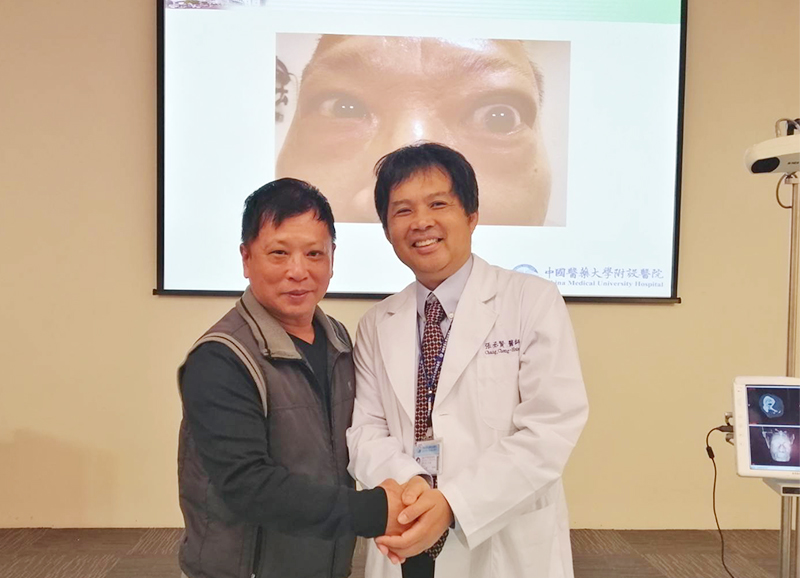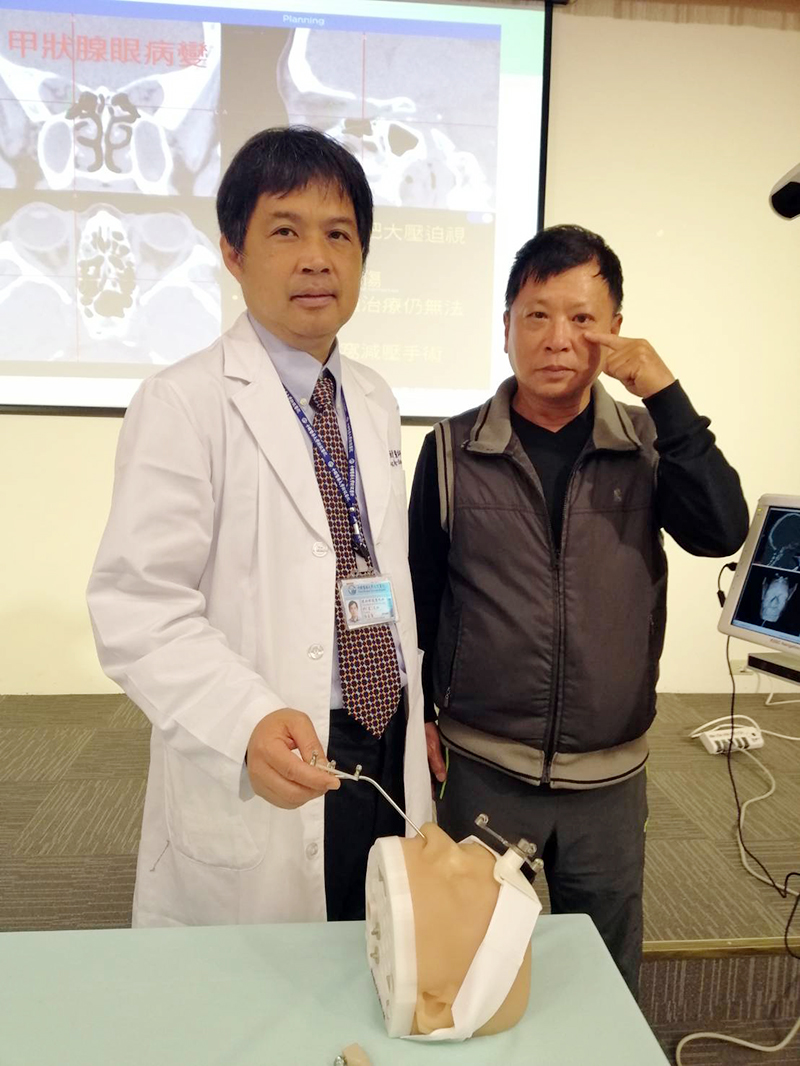News and Award
About CMUH
Periorbital and Tear Duct Surgery through Endoscopy and Navigation System | Protecting the Optic Nerve and Extrinsic Eye Muscles

Department of Ophthalmic Plastic and Reconstructive Surgery
Director Cheng-Hsien Chang
There various diseases related to periorbital that require precision surgery to avoid injuring the optic nerve and extrinsic eye muscles. You may be unaware tumor can also occur to the periorbital while ophthalmologists apply endoscopy for periorbital surgery as well as the new-tech navigation system to incise the periorbital tumor precisely.
In Case A, 54-year-old male patient discovered lymphadenopathy on the right side of his neck, which was incised and reported by pathological test as cancer metastasis. Positron Emission Tomography (PET) reveals a suspicious tumor on the inside of periorbital and nasolacrimal duct of lacrimal sac on the same side, which showed a tumor on this position through CT diagnosis. The tumor was not only close to the eyeball and extrinsic eye muscles but also protruded on the nasal cavity. The response strategy to surgical therapy was to possibly incise the tumor for pathological diagnosis; phowever the surgery should not damage the eyeball and extrinsic eye muscles, which could cause blindness and postsurgical binocular diplopia in patients. Meanwhile, the patient expected not to destruct the appearance of the face after surgery. CMUH Department of Ophthalmic Plastic and Reconstructive Surgery suggested endoscopy for incision through via nasal passage. The tumor will be more clearly positioned, which will protect the eyeballs and extrinsic eye muscles, using new navigation system for the surgery. The patient still experienced minor epistaxis that night but without having hematoma on the palpebral conjunctiva, while the eyes can rotate freely without affecting the vision. The result of pathological test was cell carcinoma of epidermis as expected, which was inferred to be the malignant tumor grown from lacrimal sac.
In another case, 59-year-old male, Mr. Yen’s vision was damaged due to thyroid associated ophthalmopathy while extrinsic eye muscles increased and thickened to decompress the optic nerve. The patient could not be fully relieved after taking the steroid therapy for tumor reduction and must undergo periorbital pressure lowering surgery. Director Cheng-Hsien Chang mentioned that the key to the surgery is relieving pressure from the periorbital while patients receiving traditional periorbital surgery usually experience swelling on the posterior periorbital palpebral. Nevertheless, endoscopic transsphenoidal surgery can get into root of periorbital and when incorporated with navigation, the area of optic nerves decompressed will be released precisely while patients will not suffer from severe post-surgical swelling.
Department of Ophthalmic Plastic and Reconstructive Surgery Director Cheng-Hsien Chang indicated that epiphora caused by the blocking of nasolacrimal duct is a common problem for middle-aged women. The traditional invasion into the lacrimal sac via carries out dacryocystorhinostom and bypass allows tears blocking the tear duct to drain into the nasal cavity via a new low-resistance pathway. This endoscopic and navigational surgery via the nasal cavity not only avoids producing wound on the face but also precisely opens the lacrimal bone from nasal cavity to enter the lacrimal sac, thereby producing new draining passage for tears.
Ophthalmologists also conduct surgery through new scientific technology and execute periorbital tear duct surgery through endoscopy and navigation system, in order to improve lesions of the eyes.




![[Taiwan–Malaysia Medical Innovation Forum] CMUH and UNIMAS Co-Host Major Medical Symposium to Advance Medical Technology and Precision Patient Care img](/FileUploads/News/20250714_131324.jpg?w=250&h=180&mode=crop&scale=both)